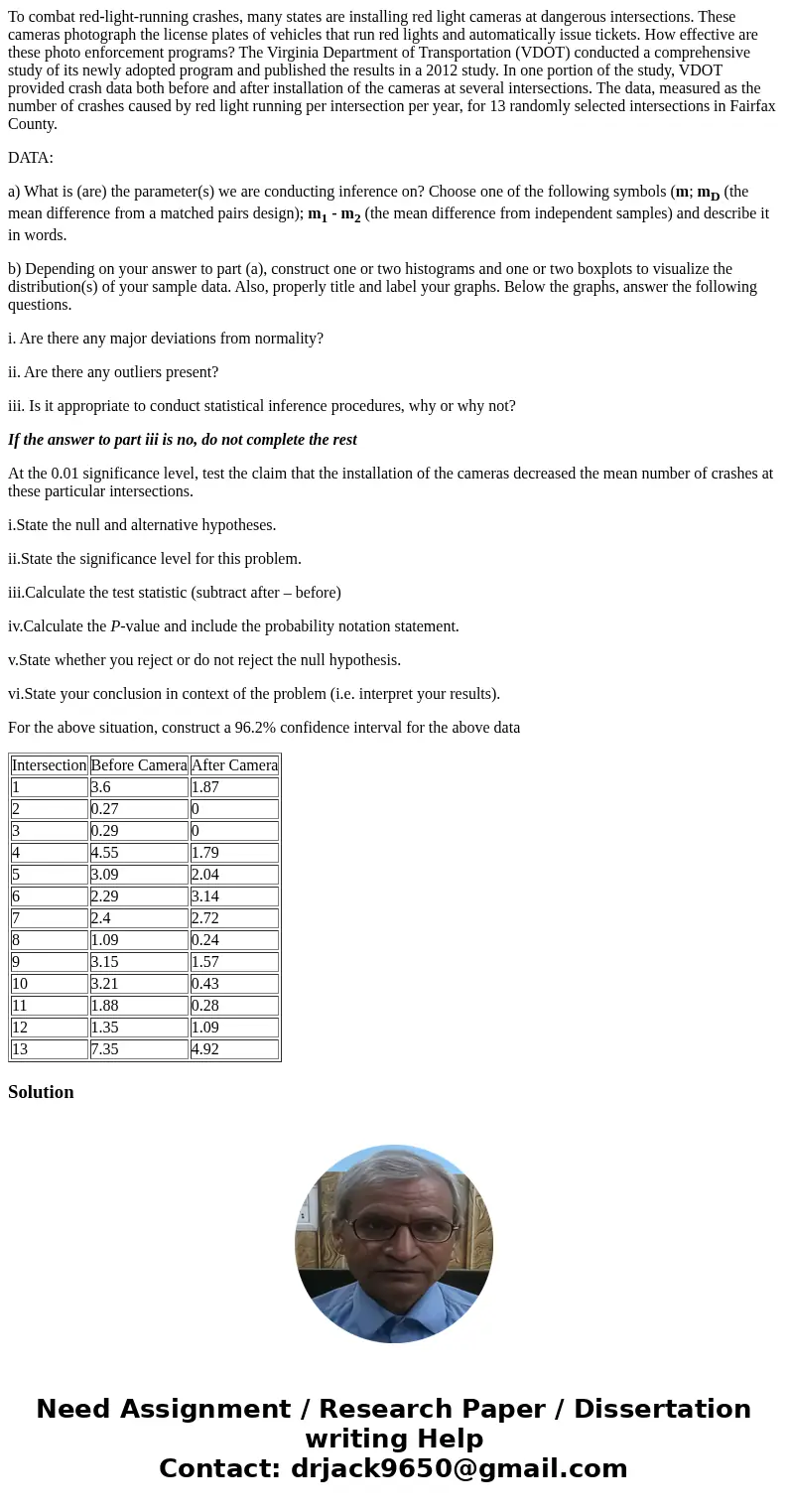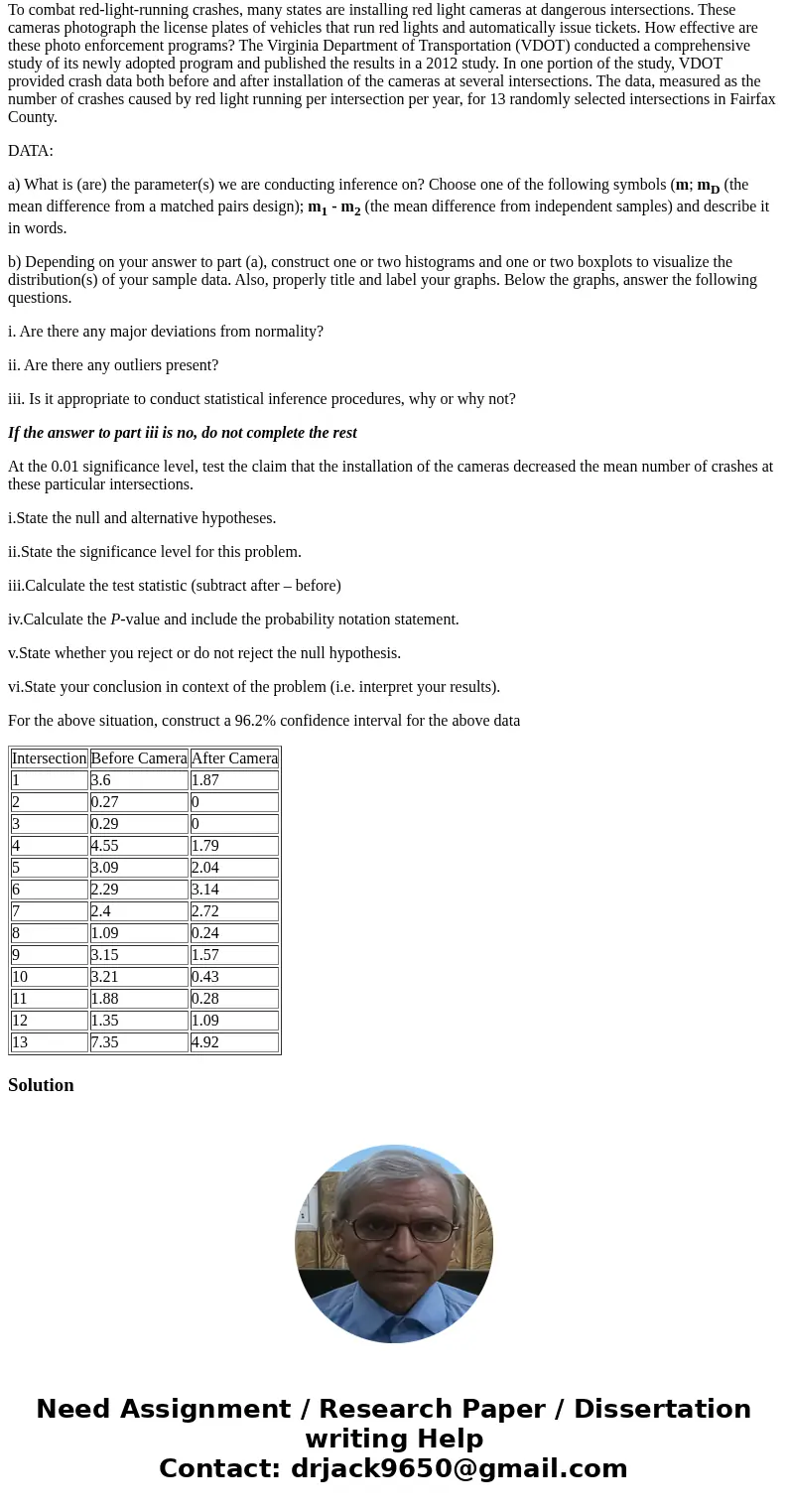To combat redlightrunning crashes many states are installing
To combat red-light-running crashes, many states are installing red light cameras at dangerous intersections. These cameras photograph the license plates of vehicles that run red lights and automatically issue tickets. How effective are these photo enforcement programs? The Virginia Department of Transportation (VDOT) conducted a comprehensive study of its newly adopted program and published the results in a 2012 study. In one portion of the study, VDOT provided crash data both before and after installation of the cameras at several intersections. The data, measured as the number of crashes caused by red light running per intersection per year, for 13 randomly selected intersections in Fairfax County.
DATA:
a) What is (are) the parameter(s) we are conducting inference on? Choose one of the following symbols (m; mD (the mean difference from a matched pairs design); m1 - m2 (the mean difference from independent samples) and describe it in words.
b) Depending on your answer to part (a), construct one or two histograms and one or two boxplots to visualize the distribution(s) of your sample data. Also, properly title and label your graphs. Below the graphs, answer the following questions.
i. Are there any major deviations from normality?
ii. Are there any outliers present?
iii. Is it appropriate to conduct statistical inference procedures, why or why not?
If the answer to part iii is no, do not complete the rest
At the 0.01 significance level, test the claim that the installation of the cameras decreased the mean number of crashes at these particular intersections.
i.State the null and alternative hypotheses.
ii.State the significance level for this problem.
iii.Calculate the test statistic (subtract after – before)
iv.Calculate the P-value and include the probability notation statement.
v.State whether you reject or do not reject the null hypothesis.
vi.State your conclusion in context of the problem (i.e. interpret your results).
For the above situation, construct a 96.2% confidence interval for the above data
| Intersection | Before Camera | After Camera |
| 1 | 3.6 | 1.87 |
| 2 | 0.27 | 0 |
| 3 | 0.29 | 0 |
| 4 | 4.55 | 1.79 |
| 5 | 3.09 | 2.04 |
| 6 | 2.29 | 3.14 |
| 7 | 2.4 | 2.72 |
| 8 | 1.09 | 0.24 |
| 9 | 3.15 | 1.57 |
| 10 | 3.21 | 0.43 |
| 11 | 1.88 | 0.28 |
| 12 | 1.35 | 1.09 |
| 13 | 7.35 | 4.92 |
Solution


 Homework Sourse
Homework Sourse